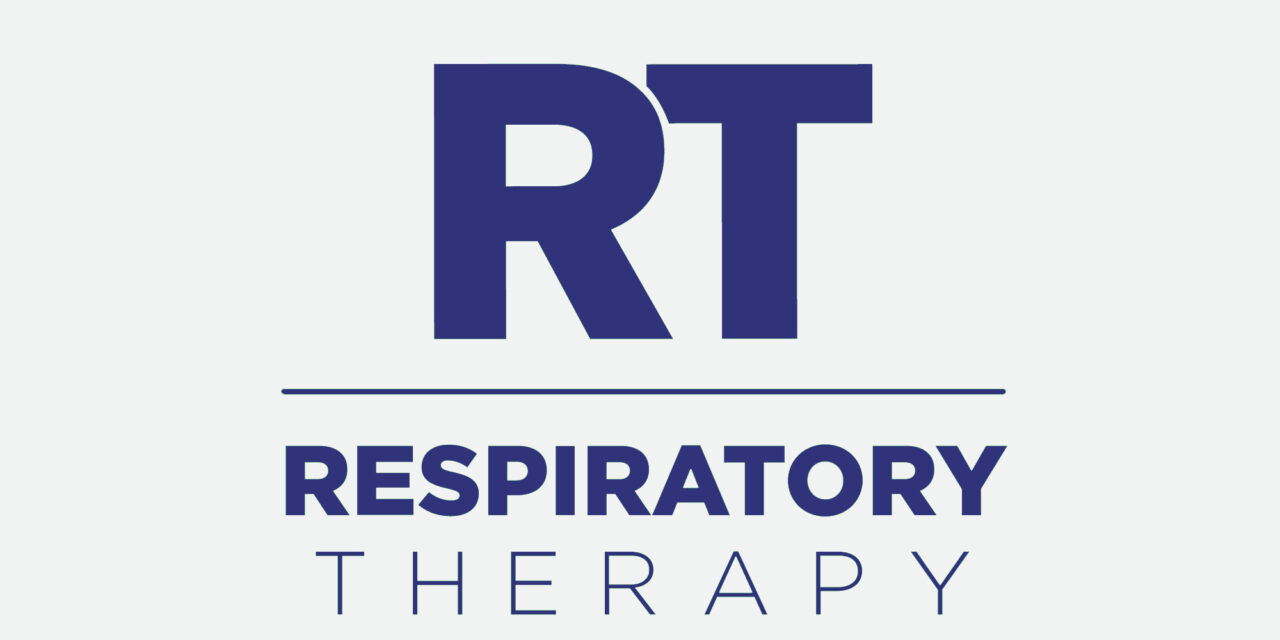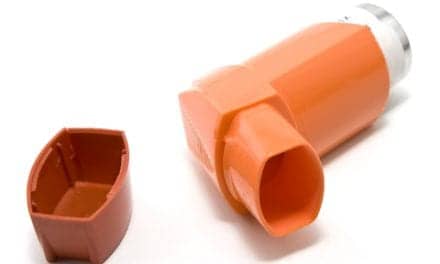Open Airways for Schools is helping elementary schoolchildren manage their asthma more effectively-and spend more days in school as a result.
By Carol Daus
The information is startling: asthma is not only the leading chronic illness in children, but it is also the leading cause of school absenteeism in the United States, responsible for 10 million lost school days each year. More than 1 million US children ages 8 to 11 suffer from asthma. School administrators, parents, and the medical community have had difficulty combating this debilitating disease, which affects children from all walks of life, from the inner city to the affluent suburbs. Adding to this problem is the fact that asthma is on the rise in all areas of the country.
A novel program, Open Airways for Schools, sponsored by the New York City-based American Lung Association (ALA), is helping elementary schoolchildren nationwide receive the instruction they need to more effectively manage their asthma. Respiratory care professionals (RCPs), including RRTs, nurses, and other health care professionals as well as individuals without medical backgrounds, have played an active role in the national program by serving as volunteer teachers.
Teaching Self-Management
Open Airways, developed by Columbia University’s College of Physicians and Surgeons in the late 1980s, has been very successful in helping children learn more about what steps to take when asthma symptoms develop. In 1992, Open Airways was honored with a Health Education Research Award from the National Asthma Education and Prevention Program, a division of the National Heart, Lung, and Blood Institute.
“Open Airways is designed to empower school-age children and their parents to take control of asthma,” says Paul Selecky, MD, a pulmonologist and director of a sleep disorders clinic at Hoag Memorial Hospital in Newport Beach, Calif, and a volunteer coordinator of the program in Orange County, Calif. “By giving children the skills they need, they can play a big part in managing their condition,” Selecky says. The program was designed to teach children ages 8 to 11 how to detect the warning signs of asthma, including the environmental factors that can trigger an attack.
According to the ALA, a pilot project of Open Airways was originally tested among 200 children in the early 1990s. Children who completed the program took more steps and demonstrated more confidence in their ability to manage asthma, improved their performance in school, exerted greater influence on their parents’ asthma-management decisions, and had fewer episodes of asthma that were of shorter duration.
Open Airways has grown exponentially since that pilot project and today is being taught in approximately 15,000 schools, reaching an estimated 150,000 children. The ALA’s goal is to have the program implemented in all 67,354 US elementary schools. The program consists of six lessons that are taught during the school day. Each lesson is 40 minutes long and is designed to be easy for trained volunteers or school staff to present. A 1- or 2-day training program is offered to all program volunteers. Although many RCPs and other health care professionals have served as Open Airways volunteers, individuals without a medical background can also participate. “The program is structured so that anybody who enjoys teaching children can volunteer,” Selecky says.
When Selecky needed to recruit volunteers in Orange County, he emailed his request over the hospital’s intranet. “The response was overwhelming,” he says. “Employees were willing to give up personal time and, in some cases, have even extended their work days just to help out.”
Kathy Hoffman, RRT, educational supervisor at Hoag Memorial Hospital, decided to volunteer because her husband and two sons have asthma, and she understands the struggles many individuals face when a family member has the disease. “It’s an exciting program because you’re not only involved in teaching kids, but you’re involved in teaching kids about how to educate others, including their doctors and parents,” Hoffman says.
Hoffman teaches with another volunteer in a school in an upper middle class school district in Huntington Beach, Calif. The program was launched last spring through a partnership between Hoag Memorial Hospital and the Orange County chapter of the ALA. Gwyn Parry, MD, Hoag Hospital’s director of community medicine, and Selecky spearheaded the program to help reduce asthma-related absenteeism in Orange County, where the rate of asthma among children has increased 43 percent in just the past 5 years. Authorities are not sure why, but it reflects a national trend for urban areas.
“The program helps prevent a lot of suffering and anxiety, allowing children to live fuller, more active lives,” Parry says. Parry points out that to ensure the program would succeed in Orange County, Hoag Hospital provided a grant to the ALA to cover the cost of materials and the management of volunteers.
Hoffman, who just completed teaching her first 6-week class, admits that the children participating in the program pick up quickly on developing self-management skills. “The program is designed to be interactive and entertaining so it’s very easy for volunteer teachers to receive positive feedback from the students,” she says.
As a respiratory therapist, Hoffman was surprised about the lack of self-management skills among the children first starting the class. “Most of them had never heard of peak-flow meters or spacers,” she says. “They were extremely fascinated in learning more about these [devices] and how they worked.”
Hoffman believes one of the reasons for this lack of knowledge is that so many pediatricians and family practitioners are still not aware of the explosion of new medications and devices available to treat asthma. “A range of nasal steroid sprays and nasal antihistamines are available to help prevent more serious respiratory problems, yet parents, let alone many primary care physicians, are uninformed about these treatments,” she says.
The program is structured to help educate parents as well as the children. Parents with children participating in the program are required to do homework designed to give them information about medications and respiratory devices. “What’s so exciting is that we’re first educating children, then educating their parents, and then indirectly educating their physicians,” Hoffman says.
With the schools’ help, Selecky and the Orange County ALA are tracking the results of the program by monitoring school absences in the year prior to offering the class and after offering the class. “The program is still too new in our area to have any definitive data on absenteeism,” Selecky says. “However, the parents, their children, and teachers have been very positive about the program.” In fact, Open Airways has been so successful in Orange County that the program is growing rapidly, with many additional schools requesting it. Currently, Open Airways has been offered at six Huntington Beach schools, and nine more schools will be included in the fall. “We would love to get to the point that we could even offer the class to children with less severe asthma,” Selecky says. “However, at this point we’re focusing on the children who have the worst cases.”
Helping Inner-city Children
Although Open Airways is now proving successful in middle-class and upper-class school districts, it was originally created to help inner-city children, as they tend to experience a higher rate of asthma. “Asthma rates in the inner city are often double those found elsewhere,” Selecky says. In fact, a recent study published in The New England Journal of Medicine revealed that cockroach antigens were discovered in the blood of inner-city children with asthma, suggesting that poor living conditions can trigger asthma episodes. Limited access to medical care, crowded living conditions, and unfamiliarity with certain medications are all contributing factors to the high rate of asthma in inner-city children.
In addition, the ALA points out that the rate of asthma among Hispanic children is two and a half times greater than among Caucasians. There is no easy explanation for this, but one factor may be geography. It has been estimated that 91 percent of Hispanics live in urban settings where air pollution is usually at its worst compared to 70 percent of Caucasians.
The New York City chapter of the ALA kicked off Open Airways in the 1996-1997 school year with 100 schools participating in the program. In the 1997-1998 school year, all 600 of the area’s schools offered Open Airways. New York’s program is set up a little differently from the California program. Designed as a partnership between the local ALA affiliates, the New York City Board of Education, the New York City Council, and two health care corporations, the New York City program requires that each school’s Department of Health nurse administer Open Airways. To become a volunteer teacher, each nurse attends a 2-day training program offered by the ALA.
Ann Marie Hibbert, RN, a public health nurse from Brooklyn, has been involved in Open Airways since 1996, when it was first offered. She currently serves as an Open Airways instructor at Public School 57 in Harlem, which has the highest incidence of asthma among all elementary schools in New York City. “I know firsthand that this program works,” Hibbert says. “As a nurse based full time at the school, I’m seeing fewer students with asthma-related problems, and there has definitely been a decrease in absences caused by this disease.”
Hibbert identifies which children should be participating in the program by going through school medical records and interviewing teachers. She points out that one of the best things about the program is that it is designed to be interactive. “Because the children are active participants, they retain the information better,” Hibbert says. “We’ve even had the parents of children who have participated in the program tell us that their children have instructed younger or older siblings on proper self-management techniques.”
Experts stress that another positive aspect of Open Airways for inner-city children is that it builds their confidence in being able to take control of their own lives. “Many of these children experience low self-esteem when they enter the program, but by the time they’re done with the sixth session, they feel a lot more confident about their abilities,” Hibbert says.
Looking to the Future
With such a successful track record during its first 2 years, Open Airways is expected to continue to expand in the years ahead to help even greater numbers of asthmatic children. In fact, large companies have begun to recognize the value of funding the program. In the fall of 1997, Key Pharmaceuticals, a subsidiary of Schering-Plough Corp, offered a $1 million corporate sponsorship of Open Airways. This sponsorship will go a long way in helping the ALA reach its goal of offering Open Airways in all US elementary schools.
“The program is growing like crazy because everyone gains by becoming involved,” Hoffman says. “The kids benefit from learning how to manage their asthma more effectively, and the volunteers benefit by feeling they have made a difference in the health of children in their communities.”
RT
Carol Daus is a contributing writer for RT.










